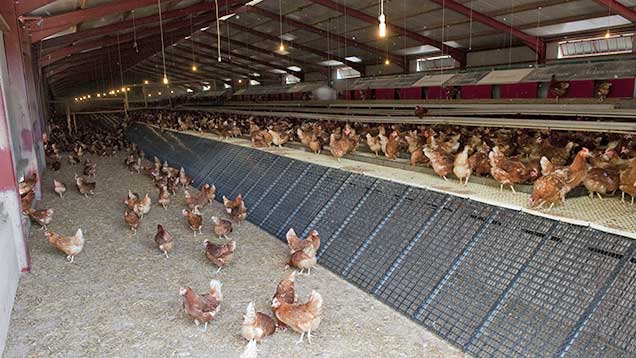Business clinic: What tax relief can be claimed for new poultry unit?
 © FLPA/Rex Shutterstock
© FLPA/Rex Shutterstock Farmers Weekly‘s Business Clinic experts offer free advice on legal, finance, tax, insurance, farm management and land issues.
Here, accountant Peter Griffiths of Hazlewoods advises on claims for capital expenditure on buildings and equipment.
Q. We are about to build a new poultry unit and we would like to know what tax relief we can claim on the expenditure.
A. Since the abolition of Agricultural Buildings Allowances, there is generally no tax relief against trading income for the cost of the actual building.
However, a lot of the expenditure that forms part of the building will qualify for such tax relief, as it will be in respect of items eligible for capital allowances.
These items, known as “integral features” as they effectively form part of the building, will need to be identified to ensure that the available tax relief is maximised.
Examples of such items are ventilation, lighting, electrical systems, heating and water systems.
See also: The latest advice from our Business Clinic experts
It is possible that the contractor constructing the building will also be installing such items.
It is therefore essential that invoices received from the contractor separately identify the cost of the “shell” of the building and items such as ventilation, lighting and water systems that are also installed by the contractor and eligible for capital allowances.
Planning and professional fees may form a substantial part of the overall cost of the unit.
Where these costs relate to both the shell of the building and to the integral features then capital allowances can be claimed on a proportion of these costs as well.
Tax relief will also be available for equipment such as feeding systems that are not part of the building and can be moved between different units.
Normally this equipment will not be provided by the contractor who constructs the building and separate invoices will be received from the relevant supplier. It will therefore be easier to identify what tax relief is available for such expenditure.
The date that expenditure is incurred can affect the timing of available tax relief but not the total tax relief available.
The current annual investment allowance (AIA) for expenditure eligible for capital allowances is £500,000 but it will drop to £200,000 from 1 January 2016. Therefore, expenditure incurred before the end of December 2015 will fall in a period with a higher limit eligible for 100% tax relief in the year of expenditure.
Where expenditure is not covered by the AIA, an annual writing down allowance of 18% is available on a reducing balance basis. This is reduced to 8% for integral features.
The invoice date will determine the date of expenditure, but where equipment is purchased under hire purchase it will need to be in use to qualify for capital allowances at a particular date.
The same considerations are relevant for other major capital outlay – for example, expenditure on a new dairy or an anaerobic digester.
The relevant expenditure will need to be reviewed to identify items that qualify for capital allowances to maximise the available tax relief.
Documentation with sufficient detail will need to be obtained from the contractor to ensure that such items can be identified. This will be easier to obtain before completion of the project.
It may be worth setting up a new enterprise in a company so that the cost of the building can be repaid out of funds that have suffered corporation tax at 20% (to be reduced to 18%) rather than out of funds that have suffered much higher rates of income tax.
This will not work in all situations, but if the new building is part of a standalone enterprise that does not occupy much of the farm, especially where not all the expenditure qualifies for capital allowances, it may be worth considering.
Do you have a question for the panel?
Outline your legal, tax, finance, insurance or farm management question in no more than 350 words and Farmers Weekly will put it to a member of the panel. Please give as much information as possible.
Send your enquiry to Business Clinic, Farmers Weekly, RBI, Quadrant House, The Quadrant, Sutton, Surrey SM2 5AS.
You can also email your question to fwbusinessclinic@rbi.co.uk or post it on the Farmers Weekly website.


